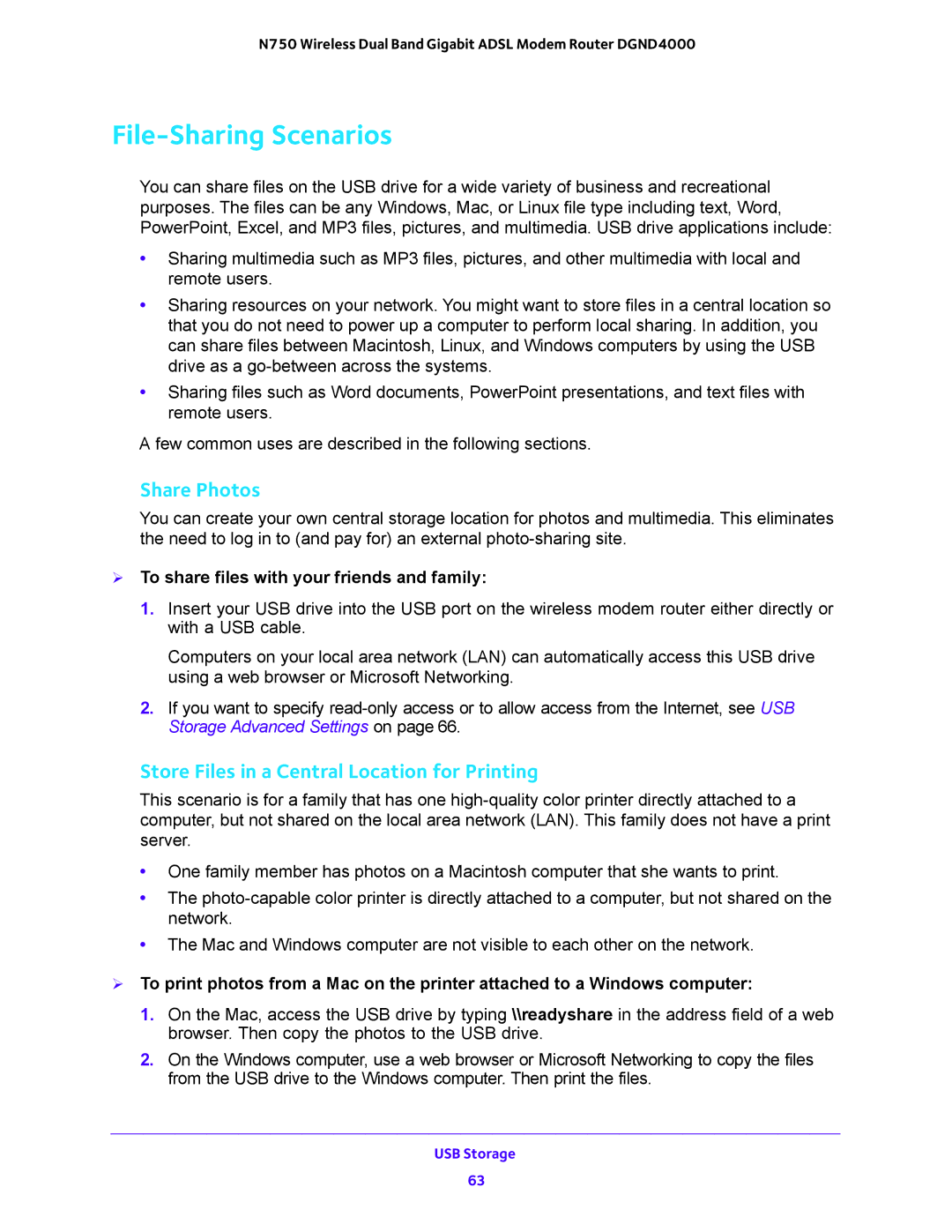N750 Wireless Dual Band Gigabit ADSL Modem Router DGND4000
File-Sharing Scenarios
You can share files on the USB drive for a wide variety of business and recreational purposes. The files can be any Windows, Mac, or Linux file type including text, Word, PowerPoint, Excel, and MP3 files, pictures, and multimedia. USB drive applications include:
•Sharing multimedia such as MP3 files, pictures, and other multimedia with local and remote users.
•Sharing resources on your network. You might want to store files in a central location so that you do not need to power up a computer to perform local sharing. In addition, you can share files between Macintosh, Linux, and Windows computers by using the USB drive as a
•Sharing files such as Word documents, PowerPoint presentations, and text files with remote users.
A few common uses are described in the following sections.
Share Photos
You can create your own central storage location for photos and multimedia. This eliminates the need to log in to (and pay for) an external
To share files with your friends and family:
1.Insert your USB drive into the USB port on the wireless modem router either directly or with a USB cable.
Computers on your local area network (LAN) can automatically access this USB drive using a web browser or Microsoft Networking.
2.If you want to specify
Store Files in a Central Location for Printing
This scenario is for a family that has one
•One family member has photos on a Macintosh computer that she wants to print.
•The
•The Mac and Windows computer are not visible to each other on the network.
To print photos from a Mac on the printer attached to a Windows computer:
1. On the Mac, access the USB drive by typing \\readyshare in the address field of a web browser. Then copy the photos to the USB drive.
2. On the Windows computer, use a web browser or Microsoft Networking to copy the files from the USB drive to the Windows computer. Then print the files.
USB Storage
63
